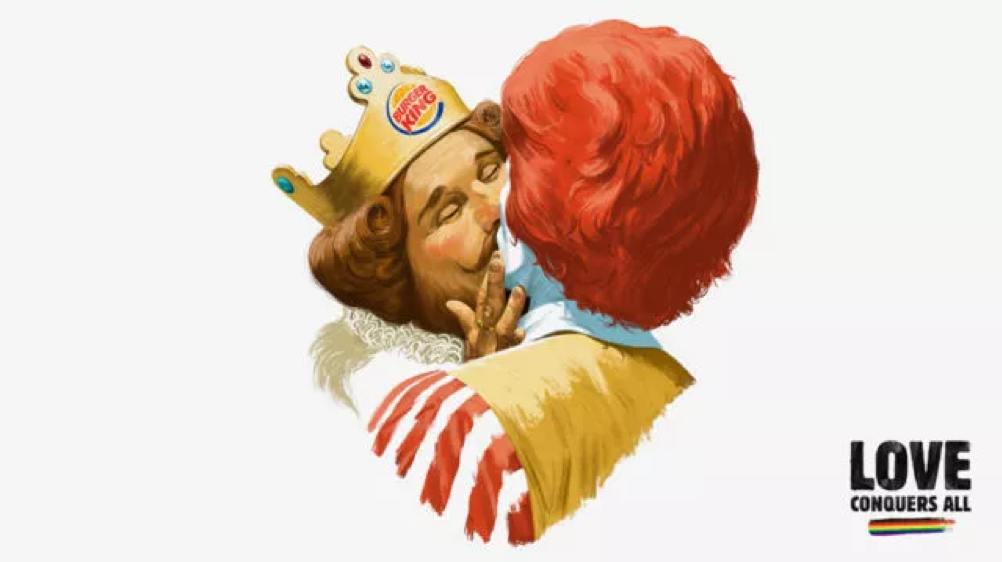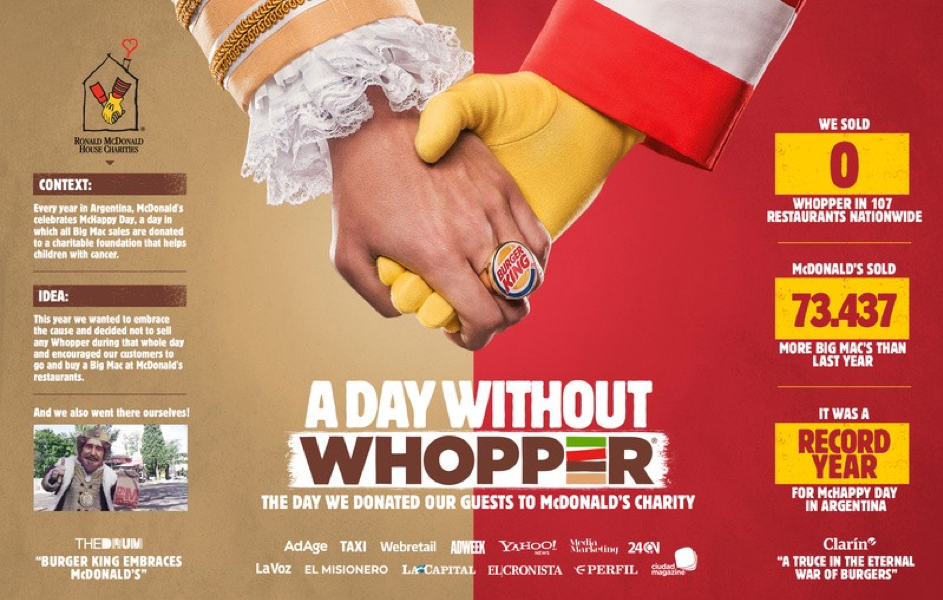Incidentally, this often leads to a deeper discussion of “who really is your competition?”.
It’s often easy for a brand team to keep such a close eye on their competition that they can become obsessed with tracking the marketing activity, sales wins and consumer reviews of another brand they find similar to their own.
Usually these kinds of brands take one of two approaches:
- The ‘anything you can do I can do better’ approach – based on the idea that you don’t have to be first, you only have to be better.
- The ‘when they go low, we go high’ approach – zigging when the other brand zags.
In my time working with brands, I have found that those that run their own race tend to do better in the long-run than those who are constantly looking side to side.
In either case, one of the biggest misconceptions that brands often face is: who is friend and who is foe?
Too often brands peg their enemies as the most similar product/service/experience in market, when in fact that brand may be your biggest ally.
When deciding who to keep close and who to keep closer, consider these questions:
- Are they helping you educate the market?
- Are you working to the same higher goal or overcoming the same issue?
- Are they helping to set pricing benchmarks?
- Are they helping to build a trend?
- Are they helping to change behaviour?
- Is there room for both in the share of wallet?
When it comes to hospitality and hotels in particular, we often find that the perceived competitors are often the key to success.
A French bistro that sees another French restaurant as a competitor is overlooking the fact that they are each helping to give the market a taste for French food; they are driving editorial coverage on French trends and roundups; they are benefiting from conversations that naturally drift from the recall of one experience into a recommendation to the other. Diners are not generally brand-loyal, they don’t choose only one place or the other, in fact they are more likely to be area-loyal or cuisine loyal. The enemy for both of those restaurants is, in fact, the brands that tempt you to stay home and not go out at all, like home-delivery services.
In a similar way, hotels will often look at comparable offerings as competitors. They will choose hotels that offer a similar price, are based in the same area and target the same guest. It’s true that hotel guests are certainly more likely to be brand-loyal to a hotel chain than they are to a restaurant, however those similar offerings are, in fact, still helping each other. Aggregator sites, (though a sales-margin threat in themselves) drive awareness and consideration for a whole group of hotels within the same comp-set as guests search based on price, area and star rating. Perhaps Air BnB properties in the area should be studied as the competition, with the hotel brand working on a clear positioning and user benefit marketed towards the audience who may be considering moving away from you and all of your ‘current competitors’.
Some brands have been clever enough to realise the power of befriending the enemy. Two of the biggest rival brands in the world have joined forces on more than one occasion. McDonalds x Burger King have put aside their differences for two notable charity campaigns in the last few years. The two brands who usually follow the ‘anything you can do I can do better’ approach to competition, no doubt realised that in being so alike, they faced the same reputation issue of being ‘not that great for you, or the world’. By turning their marketing towards big charitable causes and using the shock-factor of doing it together, they were able to in-turn, both be the good guys for a change. Plus, when you hear about these campaigns, it kind of makes you want a burger more than a pizza…

https://www.creativebloq.com/news/burger-king-mcdonalds-kiss

Lastly, there is another very good reason to keep your enemies close – because you have a lot of friends in common. If you are offering a similar thing to the market, it would be a safe assumption that if your target audience is not with you, then they’re probably with them.
Some very bold brands have jumped feet first over enemy lines, using their competitors’ offering as their own opportunity. The past few weeks alone have seen buy-now-pay-later app Klarna promote its platform to ‘shop Afterpay Day’, the countries number one BNPL’s marketing initiative; while TikTok is serving ads for Instagram Reels.
Without a doubt there are benefits to keeping an eye on the market and knowing the context of the category you are operating in, but perhaps marketing teams should consider more than one category of comp-set, ensuring that their story stands them apart from the real threat. In these when love is love, perhaps we should consider the power to be had in holding hands, after all, if there is enough to go around, then can’t we all just get along?


